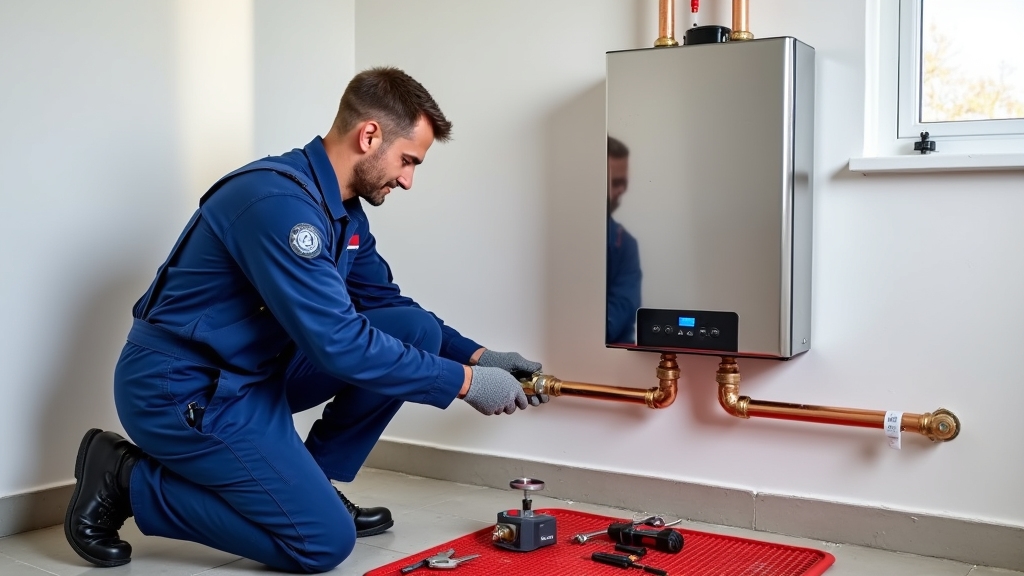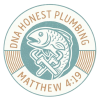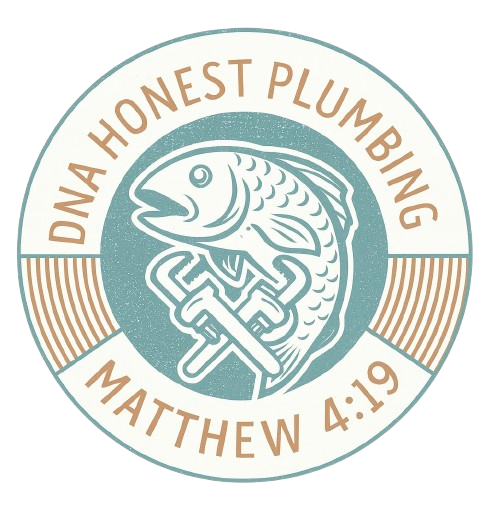A plumber installs, maintains, diagnoses, and repairs household water, drainage, and sewage systems. Core services include routine drain cleaning and clog removal, targeted leak detection and repair, water‑heater installation and maintenance, sewer‑line inspection and replacement, fixture installation and kitchen or bathroom upgrades, preventative whole‑home plumbing inspections, and emergency rapid‑response repairs. Technicians use cameras, hydro‑jetting, acoustic and thermal diagnostics, pressure testing, and trenchless options. Further details outline diagnostic methods, preventive schedules, and emergency protocols and standards.
Key Takeaways
- Clear clogs and maintain drains using augers, hydro-jetting, and camera inspections to restore proper flow and prevent backups.
- Find and fix leaks with acoustic listening, infrared, moisture meters, and pressure testing to stop water damage.
- Install, service, and replace water heaters, performing diagnostics, flushing, and safety device testing for efficiency and safety.
- Inspect, diagnose, and repair sewer lines with camera surveys, trenchless relining, or replacement based on defect severity.
- Provide emergency response, temporary containment, fast repairs, and documentation to minimize downtime and future risk.
Routine Drain Cleaning and Clog Removal

Routine drain cleaning and clog removal address common blockages in sinks, tubs, and floor drains that impede flow and promote odor and corrosion.
Technicians evaluate flow rates, trap condition, and pipe material to select mechanical augers, hydro-jetting, or enzymatic treatments. Inspection cameras document buildup location and severity, enabling targeted intervention that preserves drain health and minimizes invasive access.
Technicians assess flow, traps, and pipe materials, using cameras to target augers, hydro‑jetting, or enzymatic treatments
Service protocols include debris extraction, trap reassembly, and verification of venting to prevent recurrent backups. Recommended maintenance intervals are determined by usage patterns, water quality, and fixture type; technicians provide measurable baselines and follow-up plans.
Operators prioritize safety, proper waste disposal, and compatibility with downstream systems. The objective is operational reliability through data-driven clog prevention and routine mechanical stewardship.
Documentation supports scheduling and performance metrics regularly.
Leak Detection and Repair

After addressing flow and blockages, attention shifts to identifying and repairing hidden and active leaks that compromise system integrity.
The plumber conducts systematic leak detection: visual inspection, moisture meters, infrared thermography, acoustic listening and pressure testing to locate sources without unnecessary demolition.
Once located, assessment considers root causes—pipe corrosion, joint failure, thermal expansion—and quantifies loss rates and the effect on water pressure.
Repair strategies prioritize minimally invasive methods: targeted pipe replacement, epoxy relining, sealant application, or clamp repairs, chosen by material compatibility and failure mode.
Post-repair verification includes hydrostatic testing and monitoring for reoccurrence.
Documentation of findings, repair rationale, and maintenance recommendations enables homeowners to mitigate recurrence and plan for component lifecycle replacement.
Costs and timelines are estimated based on scope and accessibility considerations.
Water‑Heater Installation, Repair, and Maintenance

When selecting, installing, repairing, or maintaining a water heater, the technician evaluates system requirements—capacity and recovery rate, fuel type (gas, electric, heat pump, or tankless), venting and combustion clearances, local code and permit needs, and available service access—to guarantee safe, efficient operation.
The technician performs diagnostics on heat exchangers, thermostats, dip tubes, anode rods, and relief valves, measuring temperatures, pressures, and combustion efficiency.
Replacement involves sizing, choosing among water heater types, combustion air and venting design, gas line or electrical upgrades, and proper T&P and expansion tank installation.
Maintenance includes flushing to remove sediment, testing safety devices, verifying insulation and controls, and advising on energy efficiency upgrades such as high-efficiency models or heat-pump conversions to reduce operating costs and extend service life.
Lifespan predictions.
Sewer‑Line Inspection, Diagnosis, and Replacement
A sewer-line inspection, diagnosis, and replacement program begins with a camera-based inspection to locate blockages, root intrusions, pipe corrosion, cracks, sags, and joint failures, and to determine material, diameter, slope, and remaining service life.
Technicians then classify defects using standard coding, measure obstruction severity, and assess hydraulic and structural capacity relative to expected loads. Recommendations prioritize minimally invasive repairs—hydro-jetting, targeted excavation, cured-in-place lining—or full replacement when pipe integrity is compromised beyond repair thresholds.
Technicians classify defects, measure obstruction severity, assess hydraulic and structural capacity, and recommend targeted repairs or full replacement.
Cost-benefit analysis includes lifecycle expectancy, access complications, and regulatory compliance. Preventive sewer maintenance plans are specified: cleaning intervals, root control, and monitoring with periodic inspections.
Documentation includes as-built mapping, video logs, and a maintenance schedule to preserve performance and prevent recurrent failures. Emergency response protocols, service warranties, and exclusions are documented.
Fixture Installation and Bathroom or Kitchen Upgrades
Fixture installation and kitchen or bathroom upgrades require coordination with existing sewer and water systems to assure proper alignment of rough‑in dimensions, venting, and drainage slopes identified during prior inspections.
The plumber evaluates load calculations, valve types, supply sizing and backflow requirements before selecting fixtures. Precision in trap arm length, P‑traps, trap primers and trap seal depth prevents siphoning and odors.
For fixture upgrades, ADA clearances, mounting heights, water efficiency standards and manufacturer rough‑in tolerances are enforced.
In kitchen remodeling projects the contractor sequences shutoffs, isolation valves and temporary services to minimize downtime while maintaining sanitary integrity.
Connections are pressure‑tested, leak‑tested and documented.
Final commissioning includes flow rate verification, temperature control calibration and code compliance sign‑offs to assure long‑term performance and warranty validity verified.
Preventative Maintenance and Whole‑Home Plumbing Inspections
Because early detection reduces emergency repairs and extends system life, whole‑home plumbing inspections follow a standardized preventative‑maintenance protocol that evaluates supply, drainage, venting, fixtures, and appliances.
Technicians document pipe material, joint integrity, water pressure, flow rates, trap seals, vent continuity, and appliance connections. Recommended preventative strategies include targeted descaling, aerator and trap cleaning, sacrificial anode assessment, and controlled pressure testing to reveal leaks and weaknesses.
Technicians record materials, joints, pressures, flows, seals, vent continuity and appliance connections; recommend descaling, aerator/trap cleaning, anode assessment and controlled pressure testing.
A risk‑based inspection frequency is prescribed: annual for typical systems, biannual for older installations, and quarterly for high‑risk properties (multiunit, vacant, or winter‑exposed).
Reports quantify remaining useful life, prioritize corrective actions, and estimate remediation costs. Homeowners receive actionable maintenance plans and timelines; adherence minimizes deterioration, optimizes performance, and reduces lifecycle expenditures through measured interventions and supports regulatory compliance objectives.
Emergency Plumbing Services and Rapid Response
Emergency plumbing services provide 24/7 response to minimize property damage and system downtime.
Technicians focus first on immediate leak containment using isolation valves, temporary clamps, or pump deployment.
Rapid on-site diagnostics enable fast pipe repairs—such as patching, relining, or section replacement—to restore integrity and water service.
24/7 Emergency Response
When a major leak, burst pipe, or sewage backup occurs, rapid response aims first to stop water flow, contain damage, and secure the property.
Emergency preparedness and plumbing safety guide triage: isolate supply, assess structural and contamination risks, document conditions, and prioritize interventions.
Response teams deploy pressure gauges, isolation valves, pump systems, and contamination controls while coordinating with restoration and utility services.
Diagnostics include camera inspection, flow quantification, and pressure testing to identify failure points and temporary versus permanent remedies.
Decisions balance immediacy and durability: temporary shutoffs, bypass lines, or expedited repairs.
Clear protocols, trained personnel, and inventoryed parts reduce downtime and secondary loss.
Post-incident procedures document corrective actions, recommend mitigation, and update emergency plans for future resilience and strengthen institutional response capabilities now.
Immediate Leak Containment
Initiate isolation of the water supply and secure affected zones to stop flow and limit property damage. The technician evaluates leak source, applies temporary measures such as mechanical clamps, compression fittings, and approved sealants for pipe sealing, and establishes containment drains. Rapid assessment prioritizes structural risk, electrical exposure, and contamination.
| Priority | Action | Outcome |
| 1 | Valve isolation | Flow stopped |
| 2 | Temporary seal | Leak reduced |
Deployment of portable pumps mitigates standing water to support flood prevention. Communication protocols alert occupants and coordinate access. Containment stabilizes conditions until definitive work occurs; scope excludes permanent replacement. Evidence is logged and turnover instructions provided to enable efficient handoff. Records include timestamped photos, pressure readings, and technician identification for accountability and post-incident analysis. Emergency kits are inventoried and replenished regularly.
Fast Pipe Repairs
Following containment, attention shifts to rapid pipe repair protocols designed to restore integrity and service with minimal disruption.
Technicians assess failure modes—corrosion, mechanical trauma, thermal stress—using pressure testing and acoustic leak detection to locate defects.
Temporary measures include clamping, compression sleeves, and targeted isolation valves to halt flow while planning permanent repairs.
Permanent options range from soldered joint replacement and sectional pipe swaps to trenchless relining and epoxy coatings applied internally.
Consideration of pipe insulation and freeze protection is integrated into the repair scope to prevent recurrence.
Response workflow emphasizes staged triage, materials staging, and coordination with shutoff controls to minimize downtime.
Documentation of root cause, parts used, and preventive recommendations completes the emergency repairs cycle for future resilience.
Clients receive clear maintenance schedules.
Conclusion
Plumbers do far more than fix leaks — they safeguard your home’s water, drainage, and sewer systems, ensuring safety, comfort, and long-term efficiency. Fromroutine drain cleaning and hydro-jetting toleak detection and pipe repair, fromwater-heater installation and maintenance tosewer-line inspections and cabling, plumbers play a critical role in keeping households running smoothly. Regularwhole-home plumbing inspections reduce the risk of costly emergencies, while 24/7emergency plumbing services protect your property when unexpected issues strike.
Take action today — don’t wait until a small issue becomes a major headache. Schedule preventive maintenance, upgrade outdated fixtures, or get rapid help for urgent plumbing problems.
Contact DNA Honest Plumbing — your trusted partner in Sterling Heights and Metro Detroit. Call 586-257-1272 or visit ourContact Us page to request a free estimate. Whether you needaffordable pipe replacement,fast emergency plumbing solutions, orexpert fixture installation, DNA Honest Plumbing is here to help — where honesty flows through every pipe.

